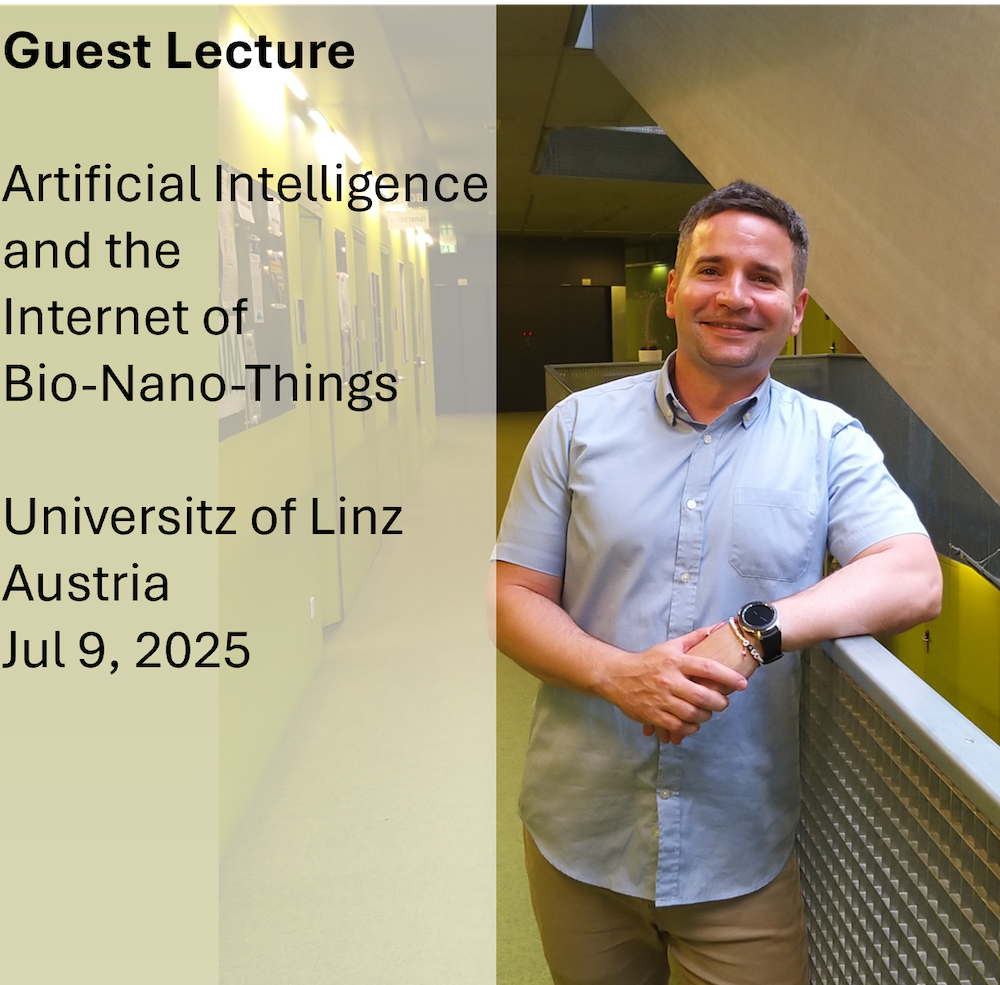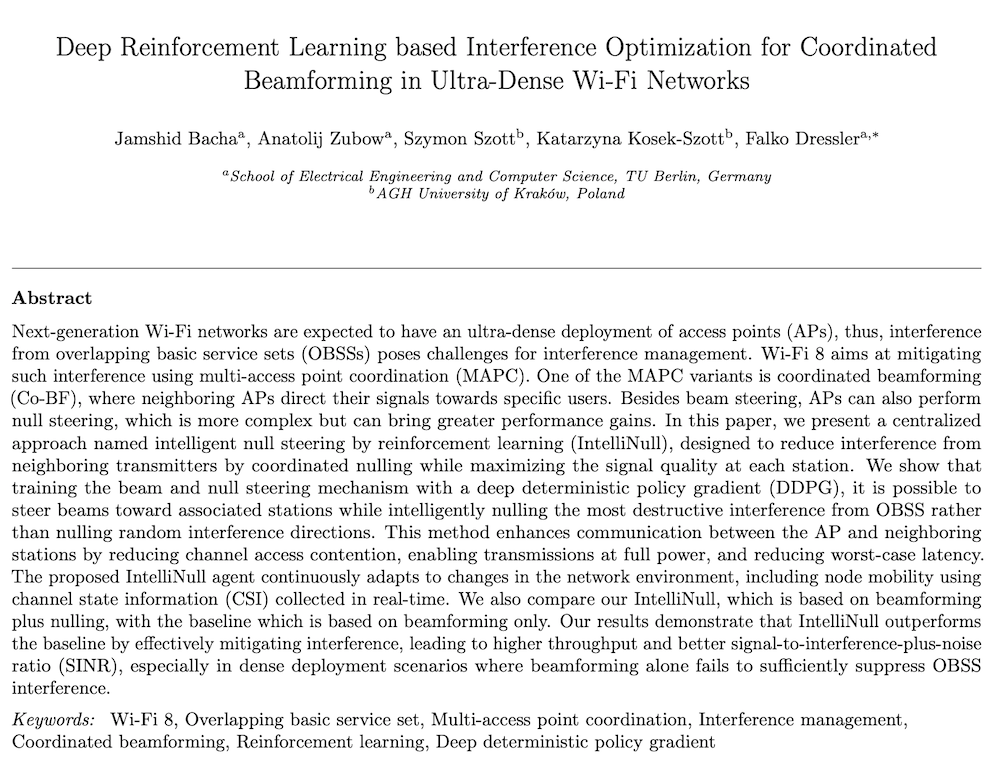Literature Database Entry
koepke2012engineering
Andreas Köpke, "Engineering a communication protocol stack to support consensus in sensor networks," PhD Thesis, School of Electrical Engineering and Computer Science (EECS), TU Berlin (TUB), October 2012. (Advisor: Adam Wolisz; Referees: Adam Wolisz and Falko Dressler)
Abstract
In this thesis, a communication protocol stack is designed and evaluated that enables successful coordination of actuators in a building automation. Using one can lead to substantial energy savings without sacrificing comfort. For already existing buildings, wireless sensor networks are suitable solution: There is no need to pull cables. Wireless sensor networks consists of single sensor nodes, each equipped with sensors, a microprocessor and a low cost radio modem. They are often powered by an autonomous power supply, for instance a battery. This allows sensors to exchange data and send it to actuators, for instance lamps and heaters. These actuators have to work together to reach a common goal. This coordination problem is known as consensus problem in distributed systems. It cannot be solved in sensor networks. However, with the right support from the protocol stack, actuators can achieve a consensus most of the time. The major challenge is that three goals – latency, reliability and energy expenditure – have to be considered all at once. The actuators have to coordinate their actions fast, otherwise comfort may suffer. The messages transmitted by sensors and actuators have to reach their destination with a high probability. Otherwise, the coordination process takes longer and the energy expenditure of the sensor nodes rises. Their autonomous power supply often has to last for several years of operation: For some sensors, the applicable standards and regulations require eight to ten years of continuous operation. In this thesis, a protocol stack is designed and evaluated that fulfills these requirements. It consists of a novel media access protocol RedMac and a routing protocol Net. Using RedMac, the sensor nodes have their radio modem usually switched off: This saves energy. The nodes do not coordinate their sleep cycles. In fact, these cycles are not even required to have the same length. In addition, RedMac supports the routing protocol Net. In Net, the receiver decides, whether it is in a suitable position to forward a message towards the destination. The necessary information is computed in a pro-active routing phase. Afterwards, it just reacts when connections break. For this reason, Net has a very low coordination overhead. In Net, each node sends its message to all nodes closer to the destination. Hence, several, parallel connections are used to deliver the message which leads to a low latency and a high reliability. When using Net and RedMac, 99.95% of all coordination attempts are successful within a given time bound. This is even more remarkable, as simple radio modems with lower than average quality have been used for the experiments to form a barely connected network. In some cases, all coordination attempts were finished successfully, in some cases less. This happens, when certain basic requirements are violated. This thesis identifies these basic requirements. For instance, one requirement is that at least 98% of all messages have to arrive at the destination. In addition, the design of the protocols relies on a few rules that are derived and evaluated in this thesis. They help to incorporate the three goals already in the design process and allow an a priori estimation of the influence of certain protocol mechanisms. This is a contribution of the thesis that goes beyond the proposed protocols: It allows an adaptation to other application areas.
Quick access
Contact
Andreas Köpke
BibTeX reference
@phdthesis{koepke2012engineering,
author = {K{\"{o}}pke, Andreas},
title = {{Engineering a communication protocol stack to support consensus in sensor networks}},
advisor = {Wolisz, Adam},
institution = {School of Electrical Engineering and Computer Science (EECS)},
location = {Berlin, Germany},
month = {10},
referee = {Wolisz, Adam and Dressler, Falko},
school = {TU Berlin (TUB)},
type = {PhD Thesis},
year = {2012},
}
Copyright notice
Links to final or draft versions of papers are presented here to ensure timely dissemination of scholarly and technical work. Copyright and all rights therein are retained by authors or by other copyright holders. All persons copying this information are expected to adhere to the terms and constraints invoked by each author's copyright. In most cases, these works may not be reposted or distributed for commercial purposes without the explicit permission of the copyright holder.
The following applies to all papers listed above that have IEEE copyrights: Personal use of this material is permitted. However, permission to reprint/republish this material for advertising or promotional purposes or for creating new collective works for resale or redistribution to servers or lists, or to reuse any copyrighted component of this work in other works must be obtained from the IEEE.
The following applies to all papers listed above that are in submission to IEEE conference/workshop proceedings or journals: This work has been submitted to the IEEE for possible publication. Copyright may be transferred without notice, after which this version may no longer be accessible.
The following applies to all papers listed above that have ACM copyrights: ACM COPYRIGHT NOTICE. Permission to make digital or hard copies of part or all of this work for personal or classroom use is granted without fee provided that copies are not made or distributed for profit or commercial advantage and that copies bear this notice and the full citation on the first page. Copyrights for components of this work owned by others than ACM must be honored. Abstracting with credit is permitted. To copy otherwise, to republish, to post on servers, or to redistribute to lists, requires prior specific permission and/or a fee. Request permissions from Publications Dept., ACM, Inc., fax +1 (212) 869-0481, or permissions@acm.org.
The following applies to all SpringerLink papers listed above that have Springer Science+Business Media copyrights: The original publication is available at www.springerlink.com.
This page was automatically generated using BibDB and bib2web.





